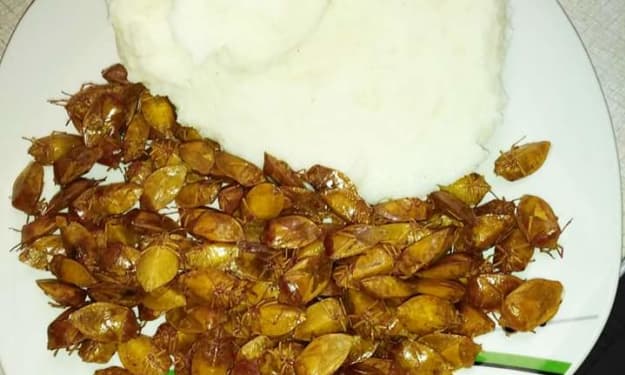Quinine's Journey: Conquering Malaria from Jungle to Pharmacy
Unveiling the Extraordinary Journey of Quinine: From Jungle to Pharmacy, Defeating Malaria

Introduction
Malaria, a disease dating back centuries, has plagued humanity with its devastating impact. Countless lives have been lost, communities disrupted, and economies weakened by this relentless foe. However, amidst the darkness, a glimmer of hope emerged in the form of quinine, a miraculous compound that would prove instrumental in the battle against malaria.
Ancient Origins of Quinine
Ancient medicinal practices in South America:
- In ancient South America, indigenous communities possessed a wealth of knowledge about the healing properties of various plants. Among them was the cinchona tree, whose bark held the secret to combating malaria.
- These ancient civilizations would harvest and prepare cinchona bark, utilizing its medicinal properties to alleviate the suffering caused by malaria.
The discovery of cinchona bark's healing properties:
- It wasn't until the 17th century that European explorers encountered the cinchona tree during their expeditions to South America. The bark's potent healing abilities quickly captured their attention.
- After witnessing its efficacy in treating malaria, European explorers brought back cinchona bark to their homelands, thus beginning the long journey of quinine's introduction to the world.
Indigenous communities' use of cinchona against malaria:
- Indigenous communities in South America had long relied on cinchona bark as a remedy for malaria. They administered it through various methods, such as crushing the bark into a powder and creating tonics or infusions.
- Their profound knowledge of cinchona's medicinal properties not only protected them from the devastating effects of malaria but also laid the foundation for future scientific breakthroughs.
European Encounter with Quinine
Jesuit missionaries' fascination with cinchona bark:
- Jesuit missionaries, amidst their travels and conversions, documented the healing properties of cinchona bark extensively.
- Their writings and accounts sparked curiosity among European scholars and physicians, leading to a greater understanding of the potential of cinchona in combating malaria.
The battle against malaria in Colonial times:
- During the Colonial era, malaria posed a significant threat to European settlers in tropical regions. With no effective treatment at hand, thousands succumbed to the disease.
- The urgency to find a cure fueled further investigations into cinchona bark and its potential to fight malaria.
Shaping the European perception of quinine's potential:
- As the use of cinchona bark spread across Europe, the immense impact it had in treating malaria became undeniable. Quinine, the compound responsible for its antimalarial properties, captivated the scientific community.
- The European perception of quinine's potential began to crystalize, opening the door to further exploration and advancement in the fight against malaria.
Cinchona Exploration and Cultivation
The great botanical expeditions in search of cinchona:
- The growing demand for cinchona bark spurred numerous botanical expeditions led by European explorers. Their mission: to unveil the secrets of this incredible tree.
- Explorers braved treacherous jungles and harsh climates, collecting cinchona specimens from remote corners of South America. Their efforts paved the way for the cultivation of cinchona in other regions.
Competition among European powers for cinchona-rich territories:
- As the medicinal value of cinchona grew apparent, European powers competed fiercely for control over regions blessed with abundant cinchona resources.
- These territories became hotbeds of botanical exploration, each nation striving to secure a stronghold in the production and supply of cinchona bark.
Establishing cinchona plantations in tropical colonies:
- European colonizers, recognizing the immense potential in cinchona cultivation, established plantations in their tropical colonies.
- These plantations not only ensured a steady supply of cinchona but also played a significant role in the economic development and geopolitical dynamics of the time.
Isolation and Identification of Quinine
First scientific studies on quinine's chemical components:
- In the 19th century, scientists turned their attention to the chemical composition of cinchona bark, hoping to unravel the mystery behind its remarkable antimalarial properties.
- The pioneering scientific studies laid the foundation for isolating and understanding quinine, the vital compound responsible for cinchona's healing powers.
The triumph of French chemists in extracting pure quinine:
- French chemists, inspired by the quest for a pure form of quinine, eventually succeeded in isolating the compound from cinchona bark.
- Their breakthrough solidified quinine's significance and paved the way for further research and practical applications.
Unraveling the elusive structure of quinine:
- The complex structure of quinine posed a formidable challenge to scientists. However, their perseverance paid off, as they gradually unraveled the intricate molecular details of this remarkable compound.
- Understanding the structure of quinine opened up new avenues for modifying and improving its effectiveness, further pushing the boundaries of medicine.
Quinine's Malaria-Fighting Abilities Revealed
Clinical trials on quinine's efficacy in treating malaria:
- Rigorous clinical trials conducted in the 19th century provided irrefutable evidence of quinine's ability to treat malaria effectively.
- Patients who received quinine treatments experienced a significant reduction in symptoms and, in many cases, a complete recovery from the disease.
Public health impact: Decreasing malaria mortality rates:
- The introduction of quinine as an antimalarial treatment resulted in a drastic decline in malaria mortality rates.
- Quinine became a beacon of hope, changing the course of public health by saving countless lives and alleviating suffering in malaria-stricken communities.
The rise of quinine as the primary antimalarial treatment:
- With its remarkable efficacy, quinine quickly rose to prominence as the primary treatment for malaria.
- Its success firmly established quinine as a breakthrough in medical history, becoming synonymous with the fight against malaria.
Quinine in War and Exploration
Quinine's role in military campaigns during the 19th century:
- Quinine proved invaluable in military campaigns, enabling European forces to navigate and conquer disease-ridden territories.
- Soldiers were administered quinine prophylactically, effectively protecting them from malaria and ensuring the success of military operations.
Exploration of uncharted territories made possible by quinine:
- Quinine played a pivotal role in enabling explorers to venture into uncharted regions teeming with malaria-carrying mosquitoes.
- Explorations, such as those by Livingstone and Stanley, were made possible by the protection provided by quinine against the threat of malaria.
Building global recognition for quinine and its contributions:
- Quinine's impact reverberated across the globe, garnering recognition and admiration for its pivotal role in overcoming malaria.
- Its contributions to human advancement, particularly in exploration and military endeavors, solidified quinine's place in history.
Challenges and Controversies Surrounding Quinine
Quinine's side effects and toxicity concerns:
- While quinine brought hope, it was not without drawbacks. The compound's inherent toxicity caused adverse side effects in some patients.
- Quinine's potential dangers triggered debates, leading to efforts to identify safer alternatives without compromising its antimalarial effectiveness.
Rising demand, exploitation, and impact on indigenous communities:
- The escalating demand for quinine led to the exploitation of cinchona resources, particularly in the territories where indigenous communities relied on the tree's bark for their own medicinal treatments.
- The consequences were severe, disrupting traditional healing practices and endangering the cultures and well-being of these communities.
The introduction of synthetic antimalarials: A threat to quinine's legacy:
- As science and medicine progressed, synthetic antimalarials emerged, posing a threat to quinine's preeminence.
- These new treatments presented advantages such as improved safety profiles and lower production costs, challenging quinine's position as the leading antimalarial therapy.
Resurgence of Natural Remedies: Quinine's Modern Alternatives
The decline in quinine usage and resurgence of traditional treatments:
- With the rise of synthetic alternatives, quinine's use diminished. However, there has been a recent resurgence of interest in traditional remedies, including cinchona bark, due to concerns about drug resistance and the desire for more natural options.
- This renewed attention rekindles the potential role of quinine and its counterparts in contemporary medicine.
Exploring other cinchona compounds with antimalarial potential:
- As scientists delve deeper into the chemical composition of cinchona, they have discovered promising compounds beyond quinine that exhibit significant antimalarial properties.
- Exploring these compounds opens up avenues for new treatments and potential breakthroughs in the fight against malaria.
Rediscovering quinine's importance in modern medicine:
- Despite the emergence of synthetic alternatives, quinine continues to find its place in modern medicine.
- It still plays a vital role as part of antimalarial drug combinations and is utilized for specific cases where alternative treatments may not be suitable or available.
Current Applications and Future Potential
Quinine as a vital component in modern antimalarial treatments:
- Quinine remains an integral part of the arsenal against malaria, often combined with other drugs to enhance efficacy and combat drug resistance.
- Its inclusion in contemporary antimalarial treatments ensures that the legacy of quinine lives on, continually contributing to the global battle against malaria.
Investigating quinine's therapeutic potential beyond malaria:
- Recent research has unveiled possible therapeutic applications for quinine beyond its antimalarial properties.
- Scientists explore its potential in treating other diseases, such as autoimmune disorders or cancer, harnessing the compound's unique properties to develop innovative treatment approaches.
Advancements in quinine-based drug delivery systems:
- Researchers continue to refine drug delivery methods, optimizing the administration of quinine and enhancing its effectiveness while minimizing side effects.
- By developing innovative delivery systems, such as nanoparticles or targeted therapies, the potential of quinine can be harnessed more efficiently.
Summary
A. Recapping the extraordinary journey of quinine:
- From the ancient healing practices of South American indigenous communities to its cultivation in European colonies, quinine has traversed a remarkable path.
B. The tremendous impact of quinine on global health:
- Quinine's discovery and subsequent use in treating malaria transformed the landscape of public health, saving countless lives and reshaping societies.
C. Looking ahead: The enduring legacy of quinine:
- As science progresses, quinine's story continues, with its potential relevance expanding beyond malaria, inspiring hope for future breakthroughs in medicine.
About the Creator
Naveed Ahmed Syed
"🔬 Scientific researcher with a trail of published work in global journals. 📚 I bridge the gap between complex concepts and curious minds through engaging articles and reviews. Embark on a voyage of enlightenment with me!"






Comments
There are no comments for this story
Be the first to respond and start the conversation.